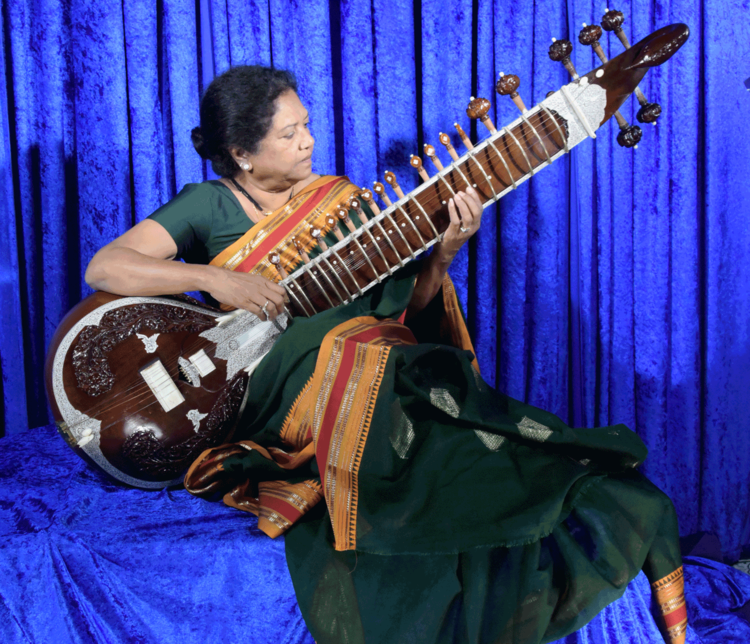
Surbahar is essentially a bass sitar. It is substantially larger and is tuned considerably lower than a sitar. But how much lower seems to vary considerably. Commonly one finds it about two or three steps lower than a sitar. Its technique is similar enough to so that musicians have no trouble going from one instrument to another. The surbahar has an advantage over sitar in that it has a longer sustain and an ability to meend (glissando) up to an octave in a single fret. Therefore it is possible to play complex melodies without using more than one or two frets. This instrument is very well suited to long slow alaps.
The instrument’s main weakness is that its long sustain causes a fast jhala to become indistinct and muddy. It is for this reason that some artists prefer to play the alap with surbahar but shift to sitar for gat and jhala.
One would think that since it does not tune to the same range that it would be impossible to play with sitar. Actually it is done quite simply, although there are several approaches. One approach is to tune it so that the baaj tar (main playing string) is set to a lower Sa instead of Ma. One then tends to do the majority of one’s playing upon the second string rather than the first. The note value of the frets is different, but it does allow the instrument to play an octave lower than a sitar.
| This book is available around the world |
|---|
Check your local Amazon. More Info.
|
Photo Gallery
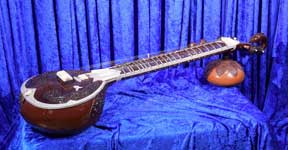
Surbahar
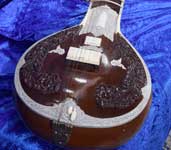
Surbahar tabali
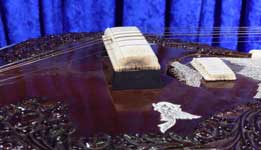
Bridge
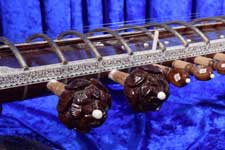
Tuning pegs and chikari mogara
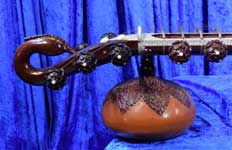
Tumba
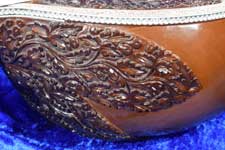
Decorative leaves
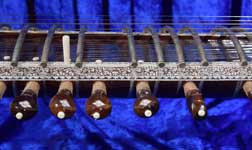
Tuning pegs, frets, and chikari mogara

Tuning bead

Sympathetic bridge and sound-hole
Selected Video
Other Sites of Interest
Bharatiya Sangeet Vadya (Review)
Catalogue of Indian Musical Instruments
Fractal dimension analysis of audio signals for Indian musical instrument recognition
Natural synthesis of North Indian musical instruments
Recognition of Indian Musical Instruments with Multi-Classifier Fusion
The Tagore collection of Indian musical instruments
Improvement of Audio Feature Extraction Techniques in Traditional Indian Musical Instrument
East Indians musical instruments
